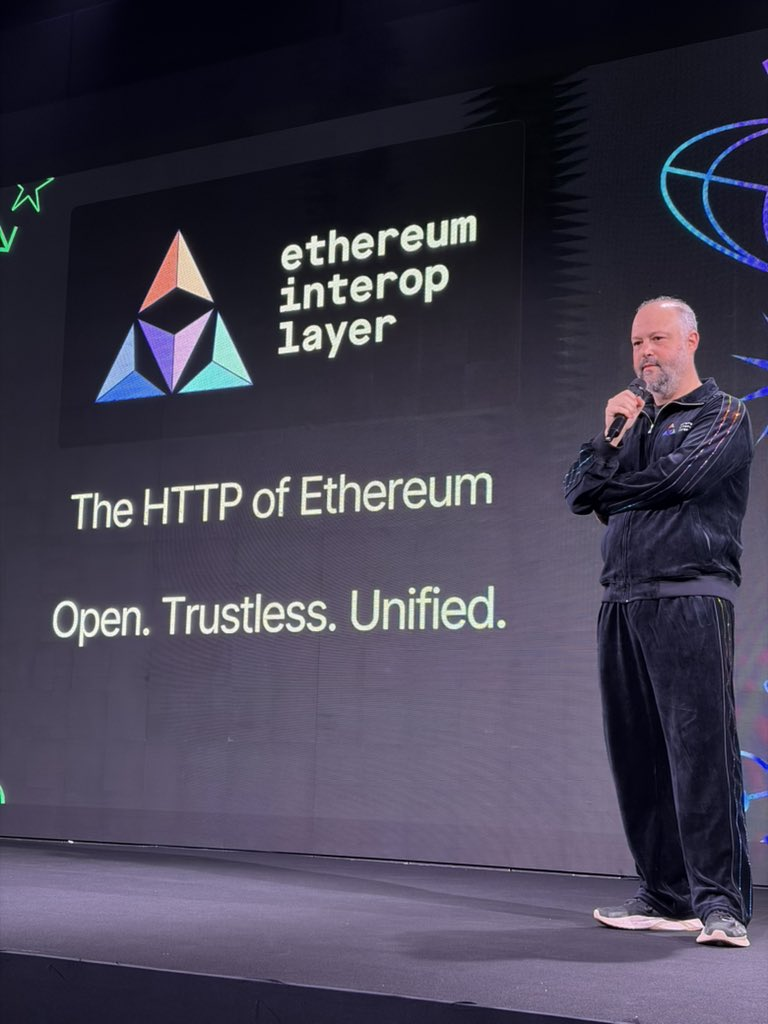Written by: Glendon, Techub News
Ethereum is building a highly unified and collaborative chain ecosystem.
Last night, the Ethereum Foundation's official blog revealed that the Ethereum accounts and chain abstraction team has proposed the "Ethereum Interop Layer (EIL)" solution, aimed at merging all Layer 2 (L2) networks into a single and unified Ethereum chain at the user perception level, making cross-L2 transactions as seamless as single-chain transactions while maintaining trust minimization and decentralization.
The concept related to this interoperability layer was initially proposed at the end of August this year and is currently in the testing and development stage.
Prior to this, Ethereum achieved scalable expansion through Rollup technology, significantly reducing transaction costs and providing ample block space, marking the gradual realization of its vision as a global computing platform. However, the development of things often has two sides, and this technological evolution has also brought about unexpected side effects, the most prominent of which is the fragmentation of user experience.
The Prosperity and Dilemma of L2
The current L2 ecosystem presents a rather complex situation, resembling scattered islands, with each chain having its own independent Gas model, cross-chain bridge system, and even wallet system. When users transfer assets between networks like Arbitrum, Base, and Scroll, they must manually select chains, confirm cross-chain paths, and trust third-party liquidity providers. This complexity undoubtedly contradicts Ethereum's initial promise of a "seamless, trustless" experience.
From the perspective of user experience, the consequences of this fragmented experience are severe. The originally smooth experience advantage of Ethereum has been significantly weakened, replaced by the complex operations brought about by multiple independent "mini-Ethereums." Users no longer manage simple and direct transaction behaviors but face a plethora of L2s. This not only introduces operational friction and cognitive burden but also comes with additional trust assumption risks, such as reliance on bridges, relayers, and sequencers, while also invisibly increasing censorship risks.
Although there have been some attempts in the industry to unify the L2 user experience before the proposal of the Ethereum Interop Layer (EIL), it is regrettable that most of these solutions deviate from Ethereum's core values. For example, some solutions weaken censorship resistance by introducing intermediaries for transactions; some solutions entrust funds to third parties, significantly compromising security, and the logic running on third-party servers also undermines transparency and the spirit of open source. Therefore, the accumulation of these contradictory phenomena has given rise to a fundamental need: to rebuild a single-chain-like user experience while retaining the scaling advantages of L2.
So, how does the Ethereum Interop Layer (EIL) resolve this contradiction?
The Philosophical Foundation of EIL: A Trustless Interoperability Paradigm
The Ethereum Interop Layer (EIL) will be a key breakthrough in resolving this contradiction, with its core positioning as a secure and efficient communication protocol rather than a financial tool.
The design logic of EIL is to make Ethereum's Rollup transactions resemble single-chain transactions, allowing users to complete cross-chain transactions with a single signature without introducing new trust assumptions. Its design philosophy is rooted in two core principles: ERC-4337 account abstraction and a trustless declaration.
ERC-4337 account abstraction standardizes account logic, enabling EIL to empower users to initiate cross-chain operations directly from their wallets without relying on relayers or solvers.
The specific operational principle is: in EIL, users utilize ERC-4337 accounts, whose logic is optimized for multi-chain use cases. The wallet generates multiple different UserOps and then performs a single authorization signature on the Merkle root of all these UserOps. The verification part for each account on the chain requires (i) a UserOp, (ii) a Merkle branch proving it belongs to a certain Merkle tree, and (iii) a signature on the root of that Merkle tree.
The main advantage of this approach is that it supports hardware wallets, which typically do not support generating N signatures simultaneously (the wallet only requires a single click from the user to complete the signature).

On this basis, the design of EIL strictly adheres to the trustless declaration. EIL puts key logic on-chain and integrates it into the user's wallet, ensuring that all operations are executed in a verifiable on-chain environment. For example, when a user mints a cross-chain NFT, the wallet automatically consolidates multi-chain balances and transparently handles Gas fees without needing to entrust funds to liquidity providers.
This design comprehensively safeguards Ethereum's four core values: self-custody (users have complete control over their assets), censorship resistance (no intermediaries or centralized nodes can block transactions), privacy (smart contracts replace intermediaries, eliminating the need to disclose users' IP addresses or intentions to relayers or solvers), and verifiability (all logic is open source and auditable).
As emphasized by the Ethereum Foundation, from a technical architecture perspective, EIL is equivalent to Ethereum's "HTTP protocol." Just as HTTP unified the server access experience of the early internet, EIL aims to make wallets the universal gateway for users to enter the multi-chain ecosystem, ultimately realizing the vision of "multiple L2s, one Ethereum."

At the same time, for users, this represents a revolution from "chain management" to "chain perception."
The implementation of EIL will fundamentally change the way users interact with the multi-chain ecosystem, primarily reflected in three key aspects: cross-chain transfers, cross-chain minting, and cross-chain exchanges. Users will be able to operate with a single click, without needing to select cross-chain paths or pay additional fees as in traditional models. The core of this experience lies in the design of "wallet as a portal," completely encapsulating cross-chain complexity.
Ultimately, the introduction of EIL will also trigger a cascading effect within the Ethereum ecosystem:
Evolution of wallets and DApps: Wallet providers will no longer need to develop custom integrations for each new chain; EIL's standardized interface makes multi-chain support a default feature. Developers can focus on user experience innovation rather than the repetitive construction of cross-chain infrastructure.
Rapid access for Rollups: When new networks join the ecosystem, EIL's compatibility design allows them to seamlessly integrate into existing wallet systems, accelerating technological iteration and user growth.
Consolidation of trust models: EIL eliminates reliance on off-chain operators, upgrading cross-chain interoperability from a "centralized exchange model" to a "decentralized exchange model." User assets are always held by smart contracts, with no counterparty risk, while reinforcing Ethereum's commitment as a "world computer."
It is worth mentioning that the emergence of EIL will have a significant impact on the existing market landscape, eliminating the need for existing intermediaries such as relayers and solvers. As users tend to choose wallet services, this will inevitably lead to a decline in projects that solve or relay L2 transactions, with their transaction volumes potentially decreasing by over 80%, or even directly destroying related fields, forcing these intermediaries to quickly adapt and transform or face extinction.
Overall, the significance of the Ethereum Interop Layer (EIL) concept far exceeds mere technical aspects. It is a return to Ethereum's original intention: a global, open, seamless, and trustless computing platform. When wallets become universal portals, and cross-chain operations are as simple as single-chain transactions, the "network era" of Ethereum will truly arrive.
免责声明:本文章仅代表作者个人观点,不代表本平台的立场和观点。本文章仅供信息分享,不构成对任何人的任何投资建议。用户与作者之间的任何争议,与本平台无关。如网页中刊载的文章或图片涉及侵权,请提供相关的权利证明和身份证明发送邮件到support@aicoin.com,本平台相关工作人员将会进行核查。




